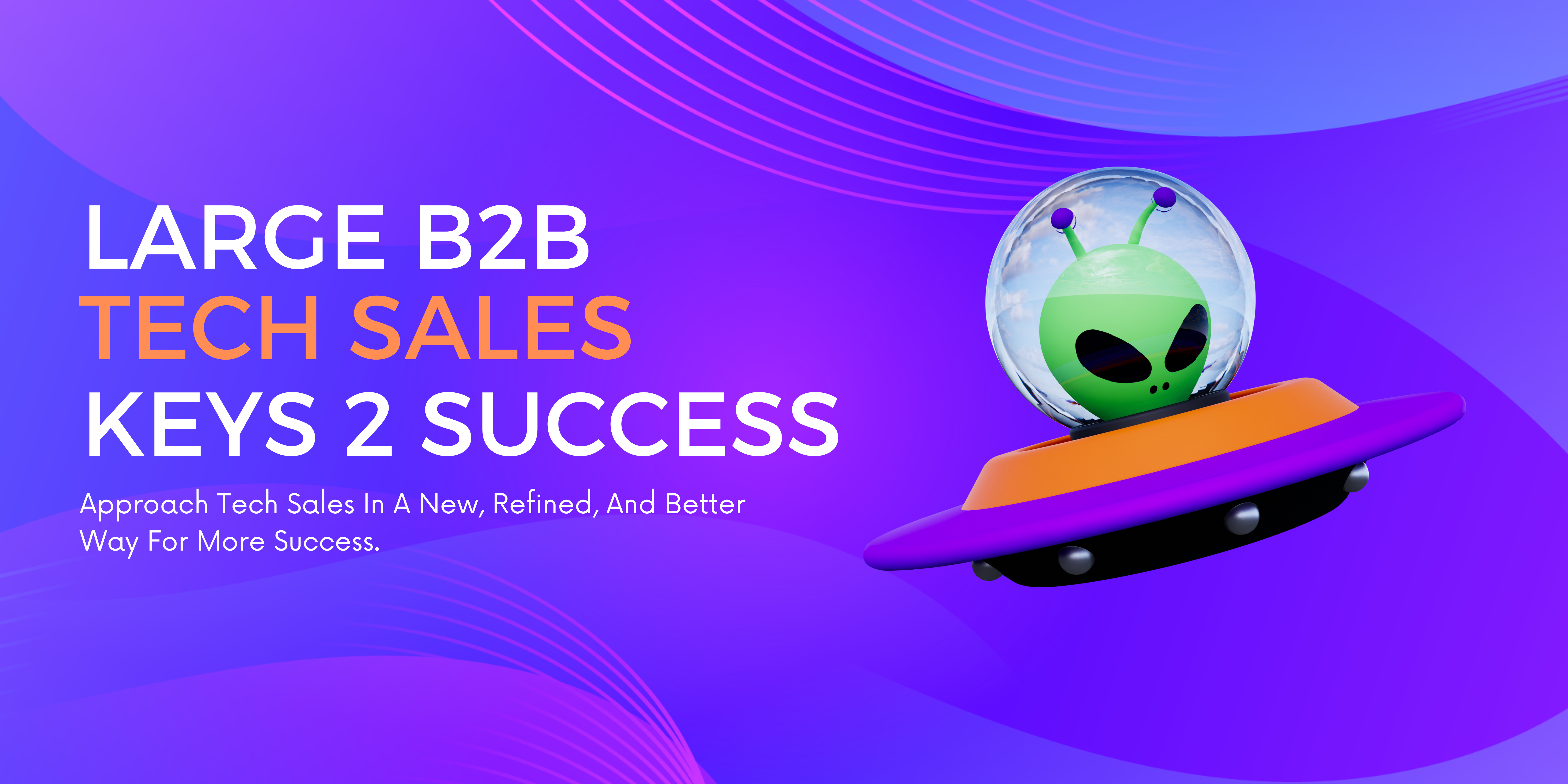Are you trying to crack the metaphorical nut that is B2B Sales? Since you’re reading this article, I’ll take a guess that you’re having a hard time.
You’re definitely not the only business that struggles with this, so let’s dive right in the subject matter and understand what makes B2B sales so difficult. This new understanding will allow us to approach sales in a new, refined, and better way, making us more successful.
As a start, let’s take a moment to asses the environment we’re operating in. This will allow us to adjust accordingly to the context.
- Decision makers are often uneducated about the benefits of given technology, but are aware of the risks that come with making a wrong decision.
- The decision making process of buying & adopting new software often involves a lot of people in the chain of command.
- Adopting new technology requires change management & careful planning.
This isn’t an exhaustive list, but I’m confident that these are the most important factors one should focus on mitigating when it comes to B2B tech sales.
Let’s dive in.
Decision makers are often uneducated about the benefits of given technology, but are aware of the risks that come with making a wrong decision.
“Assume that the person you’re selling to has no idea of what you’re talking about”.
You’re certain that your product is amazing and has many benefits, and I’m sure that’s the case ( hopefully! ), but that’s you.
Take a step back to realize that the person you’re pitching to doesn’t have your experience and background.
This is especially true when you’re selling a complex technical product.
You should take time to think about how to educate and inform your potential buyers about the benefits of your product. Otherwise you’re risking pitching a product that your buyers don’t understand.
On the contrary, most good managers are aware that making a wrong decision will cost the company thousands of dollars in adoption related costs. The internet is fully of unsuccessful implementation failures
Your success lies in making sure that your product’s benefits and values is well understood, and you have a solid plan on how to mitigate all the risks that come with it’s implementation.
How can you accomplish that? We’ll cover this later in this series.
The decision making process of buying & adopting new software often involves a lot of people in the chain of command.
Smaller companies are usually managed by the business Founder who makes the decisions single-handedly. As the company grows, responsibilities are delegated to more and more people. Managers are hired to manage different departments throughout the company so whoever is on top can focus on other things. The more the company grows, the more people are involved in the decision making process.
When we’re selling to large businesses, we need to take into account who’s going to be impacted by the new technology. Even if the product we’re offering will be used only by one specific branch of the business for e.g “Sales”
Let’s take a real-world example:
You’re selling a sales-ennoblement platform that automates outreach on certain social media channels.
The people who’ll be using the software are Sales experts – Sales Managers, Business Developers & so on.
Traditionally the Sales managers used Excel sheets to report their sales performance, however, the new software allows these reports to be automated and shared easily.
This is a great benefit for the sales team as they won’t have to do the extra task of manually entering info in a sheet. However, for the Manager on top, this presents a change in how they receive the performance updates.
This might be a tiny change that seems unrelated to the overall sales cycle, but it’s definitely something that needs to be accounted for in your sales strategy.
The people working with the sales team are affected by their new workflow, and need to be addressed accordingly. You’ll need to strive to present benefits for all sides to get them on-board.
There are many occasions in B2B sales where you’ll need to address multiple interested parties and decision makers inside the business. Think about how your product affects each one. Your best chance lies in presenting a product that helps each person along the chain, and making them your Champion.
Adopting new technology requires change management & careful planning, and involves a lot of risks for the whole business.
Every business needs to constantly evolve to stay relevant. Quite often this means adopting new software in order to adapt to the new changes & to be productive.
Being up to date isn’t a simple task as adopting new technology has risks that aren’t easy to predict, or manage. The internet is full of horror stories of large businesses that failed at implementing new software. To name a few:
- Hershey failed to implement SAP and it cost the company $150 million in revenue, a 19% reduction in share price, and the loss of 12% in international market share.
- San Francisco’s Pacific Gas and Electric attempted to implement Oracle, however a technical mistake uncoverd sensitive company information which caused a loss in the public confidence in the company’s brand.
In order to mitigate the immense risks that come with progress, large organizations seek experienced partners with proven implementation skills, and a long list of of successful case studies.
Success here lies not only making sure that your product’s benefits and values are well understood, but also in having a solid plan on how to mitigate all the risks that come with it’s implementation.
